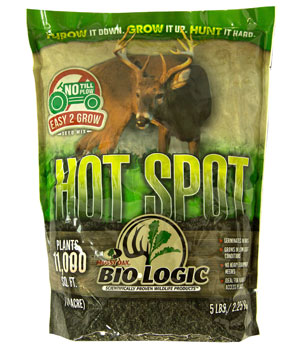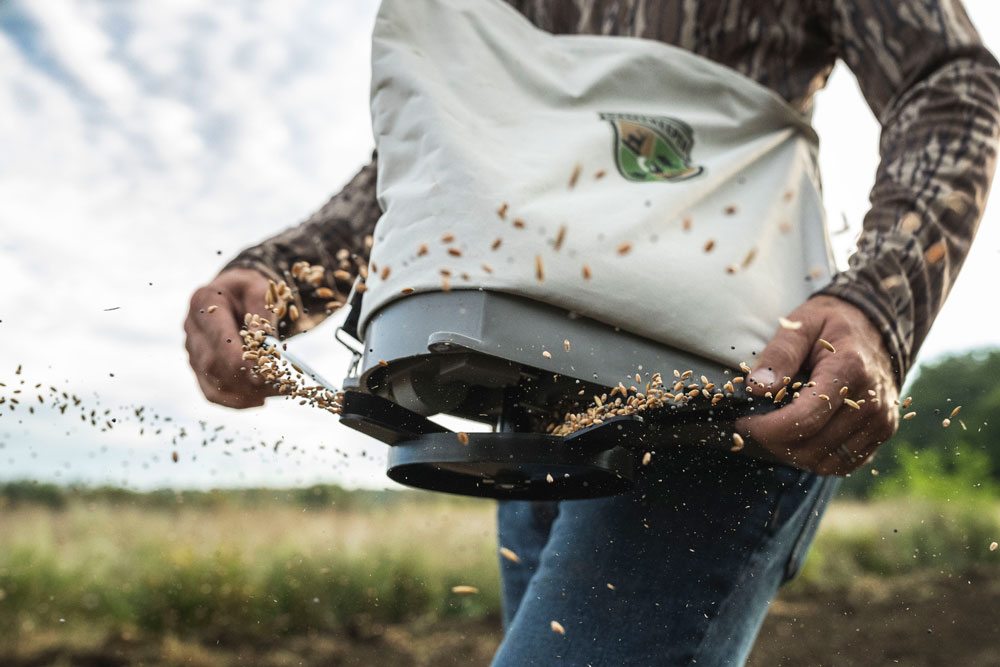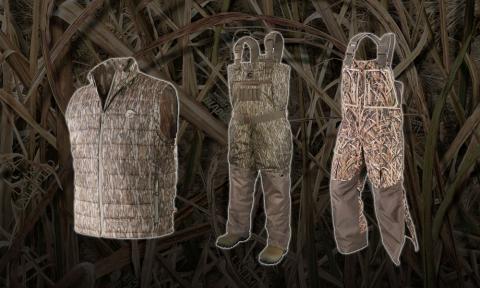Austin Delano
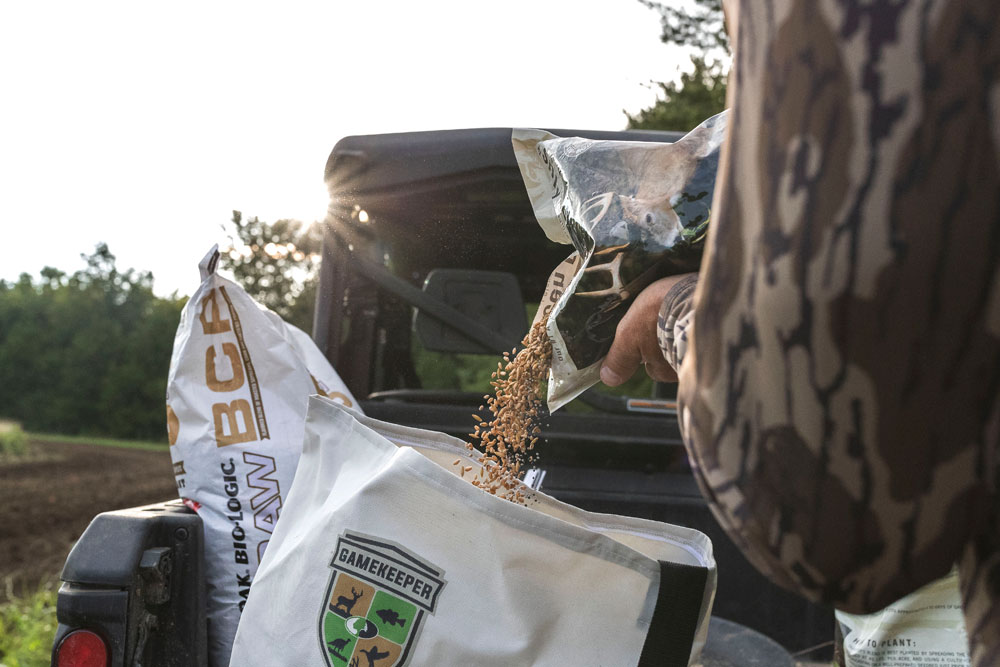
Most all deer hunters and property managers understand the importance and benefits of nutrition when it comes to having a healthy deer herd. Most of the native browse across the whitetail’s range is well below the 16-percent average in protein content that research has shown they need to reach their genetic potential in body weight and antler growth. Studies have shown on whitetails, 2-year-old bucks fed a 16-percent protein diet grew twice the antler mass of 2 year olds fed an 8-percent diet. At 4 years old, there was still a 20-percent increase in mass of those deer fed 16 percent.
The does in your deer herd benefit from a high-protein diet just as much as the bucks do. Buck fawns born to mothers in good health and with better milk production are more likely to get off to a good start. At Mossy Oak BioLogic, we pride ourselves in developing products that help every hunter and land manager with properties large and small achieve their goals in growing and maintaining healthier and more abundant wildlife.
1.Food Plots
Food Plots can be a cornerstone in improving herd health and attracting more wildlife, in particular deer, to your property. Food plots can drastically help improve the overall average of high-quality forage available to your herd. A major challenge many hunters have when it comes to planting plots is limited equipment areas where food plots can be so effective. One of the easiest to plant and most effective blends for hunting and nutrition is Hot Spot. Designed to be planted with minimal equipment and in areas with limited access, Hot Spot is perfect for many scenarios. It is an incredibly effective blend of cool season cereal grains, radish, and forage rape.
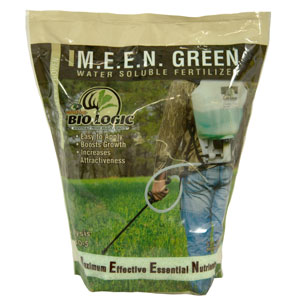 M.E.E.N Green is a very easy to apply fertilizer that contains all the micro nutrients that are missing from the common bagged fertilizers that only contain the NPK (nitrogen, phosphorous, potassium) elements. This can be sprayed on any existing food plot to increase the fertility in the soil and fill the gap that most bagged fertilizers leave. Micro nutrients such as boron, molybedemum, and zinc are needed in much smaller amounts than the macros, but are essential to growing a successful food plot regardless of the size. M.E.E.N Green contains both micros and macro nutrients making it ideal to apply on a plot that has just germinated or an already established crop. This blend can not only give your plants a much needed boost in growth and performance but also works great to “sweeten up” a particular area of a plot. The increased fertility and health of the plants will make them more attractive and palatable to your deer. This works really well in bow hunting situations where closer shots in a clear area are needed. M.E.E.N Green can be easily applied with a handheld or backpack sprayer to make sure it goes exactly where you want.
M.E.E.N Green is a very easy to apply fertilizer that contains all the micro nutrients that are missing from the common bagged fertilizers that only contain the NPK (nitrogen, phosphorous, potassium) elements. This can be sprayed on any existing food plot to increase the fertility in the soil and fill the gap that most bagged fertilizers leave. Micro nutrients such as boron, molybedemum, and zinc are needed in much smaller amounts than the macros, but are essential to growing a successful food plot regardless of the size. M.E.E.N Green contains both micros and macro nutrients making it ideal to apply on a plot that has just germinated or an already established crop. This blend can not only give your plants a much needed boost in growth and performance but also works great to “sweeten up” a particular area of a plot. The increased fertility and health of the plants will make them more attractive and palatable to your deer. This works really well in bow hunting situations where closer shots in a clear area are needed. M.E.E.N Green can be easily applied with a handheld or backpack sprayer to make sure it goes exactly where you want.
2. Spreading Seed
Seed population is a major factor in determining a food plots success. There are so many variables that can play into having a successful planting but seed population is at the top. In the world of food plots and planting crops for wildlife, maximum yield is usually not the end goal, but rather how effective it was at attracting and feeding the desired species of animals. After all, these planting are being consumed by critters not by a combine.
After years of helping customers troubleshoot planting issues, it’s safe say that field size estimation and seed planting rates are two of the most common problems. The two issues go hand in hand and often times the over estimation of acreage coupled with over application of seed turns into a twofold problem. Knowing the actual acreage or square footage of the area to be planted and taking the time to measure the appropriate amount of seed for the given field will go a long way in the success of the planting. There is a pretty diverse array of plant species that are used for food plots and wildlife plantings. Among all the different varieties available, some are much more affected by plant population or competition than others.
Plants in the brassica family (turnips, beets, rape) are very small seeds that, depending on the variety, can have broadcast rates as low as 5-10 pounds per acre. These very small seeds can grow a lot of tonnage in a growing season with correct rates, rainfall, and nutrients. However, when seeds in the brassica family get spread too heavy for the given amount of soil, competition for root space, moisture, and nutrients can quickly become too great resulting in a stunted field or crop die off. In my experience, it is best to use a hand spreader like the Mossy Oak GameKeeper bag spreader or push spreader model for these small seeds so you have good control on the amount you are putting out. Ideally you should spread it conservative enough to cover the field in two different directions to ensure even seed distribution.
3. Supplemental Feeding
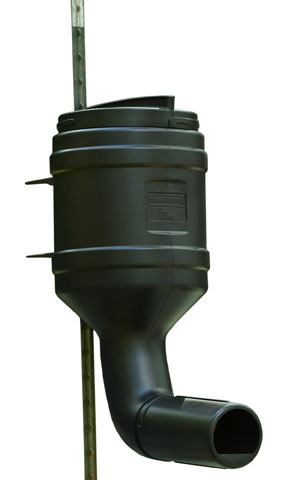 Along with quality food plots, supplemental feeding can really help improve overall herd health and help your deer reach their potential. Most people who assume their deer have “bad genetics” would be surprised with the kind of deer they could grow if they had better year round nutrition.
Along with quality food plots, supplemental feeding can really help improve overall herd health and help your deer reach their potential. Most people who assume their deer have “bad genetics” would be surprised with the kind of deer they could grow if they had better year round nutrition.
- Providing supplemental feed in a free choice style feeder like the GameKeeper T-Post feeder or simply by pouring on dry, well-drained ground is a great way to relieve some of the physical stress on a whitetail’s body. BioLogic’s new BCP feed (beans, corn, pellets) has a great ratio of fats, carbohydrates and protein to help deer recover from the rut and winter stress to get them headed into the spring in top physical condition.
- Deer that enter the spring in top physical shape, rather than having to repair and play catch up, have their best chance of reaching their genetic potential. Doe will have healthier fawns and bucks can have a head start on that next set of antlers when they have a steady source of good nutritional feed in the winter and early spring.
- Keeping trail cameras up and going on supplemental feeders can show you where deer are spending their time, what bucks have made it through the hunting season as well as showing you when and where they may be dropping their sheds. Feeders have fast become one of the best location to use a game camera for census that can help you determine deer density as well as buck/doe ratios.
- Feeders also attract numerous other smaller critters during the winter, many of these are nest predators such as raccoons, opossums and skunks. With these unwanted egg snatchers coming to a steady food source, it makes it a great place to have traps out to knock down their numbers and help out your turkey and other game bird population.
- Supplemental feed helps fill the gaps in growing seasons between food plot crops and native browse. Droughts and hot weather can be really tough on deer and other wildlife when typical browse and food plot crops are not there, supplemental feed can really help during these times. One way to increase supplemental feed consumption is to add a highly palatable attractant like BioLogic Full Draw Ground Down. Ground Down is a granular attractant designed to entice deer to a specific spot and hold them there. The strong, natural aroma of processed grain will grab the attention of any deer that smells it. The taste will have them seeking more Ground Down Attractant even after it has been fully consumed.
Tip: Because it is a granular product, Ground Down should be applied in smaller amounts during warm and/or humid weather; use just enough in any area to keep deer searching for it. As weather cools and the risk of spoilage decreases, larger amounts can be fed per location. Full Draw Ground Down Attractant is best used in free-choice situations or can be poured directly on dry ground and deer will consume.
- A more compact and simple way to provide a feed/attractant is with a compressed feed block. Blocks have always been a favorite for land owners and hunters. They are convenient and long-lasting when compared to standard grain products, and they do not require special feeders. The Mossy Oak BioLogic Full Draw Attractant Block takes all that convenience and packs it full of things that deer love to eat. Roasted Soybeans and whole corn make a difference you can see, and a blend of other highly attractive, aromatic grains make the Mossy Oak BioLogic Full Draw Attractant Block easy for deer to find and even easier to eat. The Block is good for camera sites, hunting locations, or just a way to increase the amount of good groceries on your property.
4. Minerals
Mineral sites can be a great way to attract deer to your property as well as provide essential minerals and nutrients. Mineral use by a whitetail’s body typically exceeds mineral intake during the antler growing cycle as well as when the does are carrying and nursing fawns. It only makes sense to provide them with a mineral supplement that contains all the essential nutrients and trace minerals they could need during these critical stages of growth and development. BioLogic’s Full Potential Mineral has all the necessary minerals and vitamins for a whitetail’s needs. This scientifically formulated blend provides the essential nutrients many whitetail habitats are depleted of or missing. Apply these minerals, where legal, on a main trail leading to or from your preferred watering source to increase consumption and watch activity increase on your property and your deer herd improve. The strong apple aroma will have the deer using it very quickly.
Mineral placement is not crucial in most cases; deer have a way of finding them almost anywhere you locate it. Mineral sites on the edge of spring/summer food sources is often very effective as these are already high traffic areas. Place some of these sites somewhat close to water sources, as it seems to increase utilization. Also placing a mineral rock like the all-natural BioRock on rotting stumps off in thickets or pine plantations can be very effective. Oftentimes, older age class bucks will use these licks that are less visited by the younger deer and in a secluded area. This is a great way to get pictures on your trail camera of th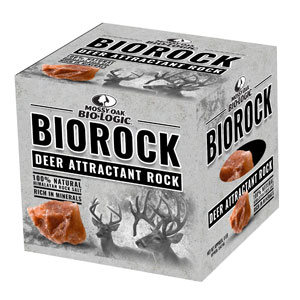 ose old reclusive bucks. Old hardwood stumps make ideal locations for mineral licks. As the rain hits the site over time, the minerals leach into the wood and old root system and soil surrounding the stump. Whitetails love to paw and consume the mineral rich soil and wood mulch. For guys that are fighting feral hog problems, mounting a mineral rock on a T-post with a piece of rebar is a great way to get your minerals off the ground and out of the pigs’ reach.
ose old reclusive bucks. Old hardwood stumps make ideal locations for mineral licks. As the rain hits the site over time, the minerals leach into the wood and old root system and soil surrounding the stump. Whitetails love to paw and consume the mineral rich soil and wood mulch. For guys that are fighting feral hog problems, mounting a mineral rock on a T-post with a piece of rebar is a great way to get your minerals off the ground and out of the pigs’ reach.
The antler growing process is very interesting and one of the most unique cycles in the animal kingdom. Velvet antlers are considered one of the fastest-growing tissues in mammals. Whether it is a whitetail, mule deer or elk, antlers are a large part of our fascination with these big game animals. BioLogic’s Bio Rock and Full Potential Mineral can be great ways to supplement your deer herd’s diet and provides a great opportunity to inventory herd density and health by getting great, up-close pictures during the antler growing and fawn rearing stages.


